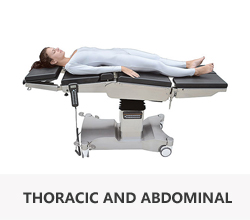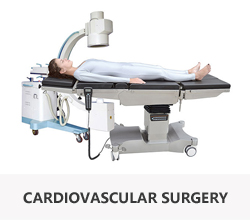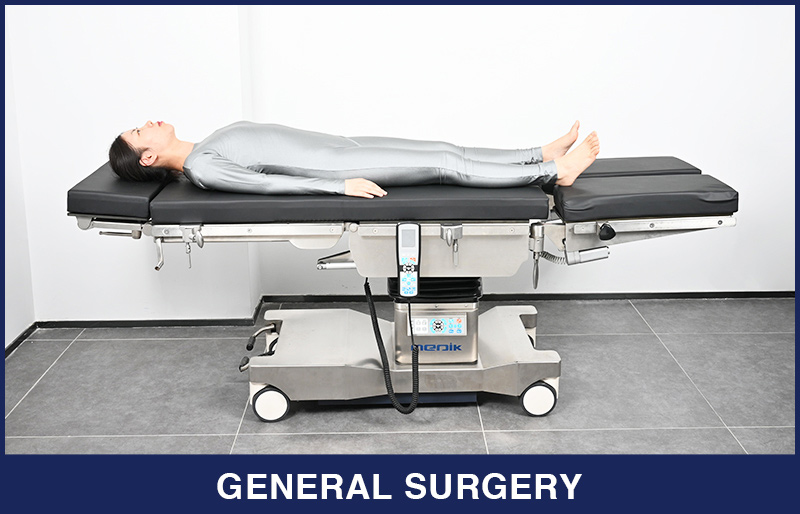

Patient positioning is essential to ensure patient safety during a surgical procedure and before and after. The optimal position may require a compromise between the best position for surgical access and the position the patient can tolerate. One of the four basic patient positions during surgery is the supine position.
What is the Supine Position?
The supine position is the most common patient position used in the OR. Typically, the head is rested on a foam pillow, keeping the neck in a neutral position. The patient’s arms, maintained in a neutral thumb-up or supinated position, may be tucked at their sides or abducted to less than 90 degrees on arm boards on the operating table.

When to use the supine position?
The supine position provides excellent surgical access for intracranial procedures, most otorhinolaryngology procedures, and surgery on the anterior cervical spine. Also known as Dorsal Decubitus, procedures that typically use the supine position include:
* Cardiac
* Colorectal
* Thoracic
* Abdominal
* Abdominothoracic
* Endovascular surgeries
* Laparoscopic surgeries
* Upper extremity surgeries including hand and wrist
* Lower extremity surgeries including hip, knee, foot, and ankle
Procedures on the neck and face are also often performed in the supine position, as well as plastic surgeries and general surgeries.






What benefits of the supine position?
The supine position is a naturally comfortable posture for patients, promoting the alignment of their anatomical structures in a neutral manner. This position usually doesn't exert any undue pressure on the respiratory system, allowing patients to maintain proper breathing. Moreover, it provides optimal access to the body's front-facing structures during medical procedures. Additionally, the supine position is considered one of the safest for maintaining stability on the operating table. With the entire body well-supported, it's easier to secure patient safety straps, further minimizing the risk of accidents or falls.
How to decrease the risk of injury in this position?
● As with all surgical positions, surgical staff should be aware of risks to the patient in the supine position.
● One such risk involves the patient’s respiratory functions. When a patient is placed from an upright to a supine position, the intra-abdominal organs shift cephalad, compressing the adjacent lung tissue and potentially leading to decreased functional residual capacity (FRC).
● The supine position also causes extra pressure on the skin and bony prominences over the occiput, scapulae, elbows, sacrum, coccyx, and heels. Surgical table pads and patient positioning pads should be used to reduce the risk of pressure sores and ulcers.
● In the operating room, prolonged surgery in the supine position places the ulnar nerve at risk when not appropriately positioned. Placement of the arm should either be tucked at the patient’s side in the thumbs-up position or abducted to less than 90 degrees with the forearm supinated. Supination of the forearm in the abducted position puts the least amount of pressure on the ulnar nerve, decreasing the risk of compression related injury. Flexion of the elbow to greater than 90 degrees should be avoided because this limits the space of the cubital tunnel via ligament tightening and compresses the ulnar nerve.
What are the variations of this position?
Alterations of the supine position typically include tilting the patient in various planes. This includes the Trendelenburg, reverse Trendelenburg, and left or right tilt. Other variations include the lawn chair position, in which the patient’s hips and knees are flexed to relieve strain on the lumbar spine. This is often used for patient comfort during monitored anesthesia care (MAC) or awake procedures. The frog-leg position can be used for access to the perineum and for Foley catheter placement. In this variation, the patient’s knees are flexed and the hips are externally rotated. The plantar surface of each foot are placed together.
Conclusion
To conclude, the supine position is a fundamental and versatile patient posture in surgical practice. Its advantages encompass anatomical alignment, respiratory ease, and access to various surgical sites. While maintaining patient comfort, healthcare professionals must remain cautious of potential risks such as respiratory changes and pressure-related issues. Adhering to proper arm positioning and utilizing modifications like Trendelenburg and frog-leg positions further enhance the position's utility. Ultimately, the supine position's central role in ensuring patient safety and procedural success remains undeniable.




Related Resources
References
1.Huber D. Preventing deep tissue injury of the foot and ankle in the operating theatre.Wounds UK. 2013; 9(2):34-38.
2.Winfree, CJ, Kline, DG. “Intraoperative positioning nerve injuries”. Surg Neurol. vol. 63. 2005. pp. 5-18. (Comprehensive review of position related nerve injuries.)
3.Guideline for positioning the patient. (2017). AORN Journal, 105(4), P8-P10. doi:10.1016/s0001-2092(17)30237-5
4.Rothrock, J. C. (2011). Alexander's care of the patient in surgery (14th ed.). St. Louis, MO: Mosby. Vídeo del producto